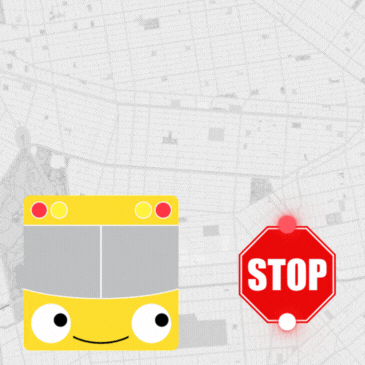
NY Day School Students Ask if Statues are Kosher
ALBANY, NY — Students at the Maimonides Day School in Albany got up-close lessons in modern day idolatry when a traveling sculpture exhibit set up shop for several months in the New York capital.
Most people would be surprised to learn that idolatry, a fixture of ancient times prohibited by the Ten Commandments, still exists in the present day. And a host of Jewish texts, both classical and medieval, discuss the laws governing the prohibitions on idol manufacture and use. But for the students at Maimonides, the question was simple: Did the offerings of sculptor Seward Johnson’s “Sculpture in the Streets” fall under the rubric of “graven images” and thus, run counter to Jewish law?
“We integrate their Jewish learning with their experiences in the real world,” says Rabbi Mendel Rubin, director of Chabad on Campus at the University of Albany and the coordinator of special programming at Maimonides. “It is about our surroundings and exploring them in the Jewish lens.”
Rubin’s father and director of Chabad of the Capital Distric, Talmudic scholar Rabbi Yisroel Rubin, led the in-depth study.
“These case study classes bring Jewish law alive for these kids,” he explained.
The elder Rubin, who serves as Maimonides’ dean and authored numerous volumes and essays on Talmudic structure and Jewish law, prepared copies of relevant texts penned by legal authorities over several generations. He included the works of modern-day rabbis who grapple with such seemingly-innocuous questions as the status of dolls and visiting museums that contain sculptures.
More to the point: Are the citizens of Albany violating a crucial commandment?
“I personally don’t think they are,” offered student Eli Levine, who joined the class field trip to look at the series of statues sprawled across the capital.
The discussion, however, didn’t end there and veered into the hypothetical. Even if they didn’t fit the definition of idolatry, could a Jew – who is generally prohibited from sculpting lifelike works – create one of the statues?
“According to Maimonides,” said the elder Rubin, “one is not allowed to even create an image for its beauty.”
In his Mishneh Torah, a compendium of Torah-based laws grouped according to overall subject matter, Maimonides explains the prohibition of making a three-dimensional image in terms of the possibility that one may come to view the creation as an idol. Even when the artist’s intent is pure, the image would still be prohibited.
“An example of idolatry today,” said Rubin, who because of the complexities involved, refers people to legal experts when they have specific questions, “would be objects used in many Eastern cultures.”
According to most opinions, dolls are not prohibited, nor is visiting a wax museum, where full bodies are exhibited in their entirety.
But “to actually create a body,” said famed author Rabbi Gavriel Zinner, “would be prohibited.”
















Moishy Kudab
GO MAIMONIDES AND ALBANY!!!!
Who Seed Watt
To Moishy Kudab:
MAIMONIDES WENT TO ALBANY????
GO JGR!!!!
GO CHANA, AZRIEL, AND CHANI!!!!!
YAHOOO!
WE LOVE JGR YEAH YEA! – GO LABERS AND RUBINS!
CHT
I just fond out recently that Madam Alexander was Jewish. She is one of the biggest innovators in the doll industry and inventor of plastic dolls.
Also, she was big Baala Tzdoko.